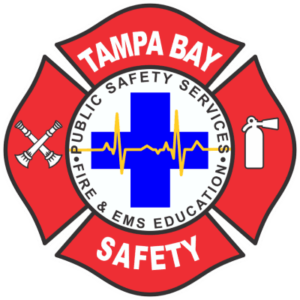Exit signs & Emergency light testing
Batteries, Bulbs, Testing and Replacement
Batteries, Bulbs, Testing and Replacement

Emergency lights installed in businesses are simple lighting devices that contain a small battery. The device is connected to the building’s electrical supply, which provides a constant charge to the battery. In the event of a power failure, circuitry in the fixture activates the lights, so that occupants can see to exit the building. Many emergency lights are only designed to work for the required minimum of ninety (90) minutes on battery power.
Signs that are internally lighted operate in much the same way. Because they stay on all the time, many of them have two sets of bulbs. One set, that is normally on, operates on 110 volt building power. The second set, which comes on only when there is a power failure, are low voltage bulbs that operate on the battery only. Therefore, an exit sign that appears to be working normally may not work at all during a power failure. The low voltage bulbs may have burned out.
In some larger buildings, emergency power to exit signs and emergency light fixtures is provided by an emergency generator. Testing of emergency lighting in these facilities is normally done at the same time that the generator is tested and is usually done by either an electrical contractor, or by full time building maintenance staff.
Fire code requires that emergency lights or lighted exit signs be inspected and tested at least once a month. A test must include thirty-seconds of continuous illumination of the lights.
An annual test is also required, with the lights being operated on emergency power for the full minimum of ninety (90) minutes. Written records documenting the testing must be maintained and available for review by the Fire Marshal or your insurance company.
Exit signs or emergency lights have a small “push to test” button somewhere on the casing. You can push and hold this button for thirty seconds to test the bulbs and battery. This works ok if you have a small number of devices that can be easily reached. The lights should come on and remain at the same brightness level for the full thirty seconds. If the lights dim right away, or some of the bulbs don’t work, then you should contact us to replace the bulbs or batteries.
You should also check to see if the sign is properly lighted when in normal power mode. For a large number of devices, there is a second option that may work better. Locate the circuit breaker or fuse that supplies power to the emergency lights or exit signs. The circuit breaker should be turned off, and the lights observed to determine if they work for the 90-minute (annual) or thirty-second (monthly) testing period.
Defective batteries will maintain just enough charge to fully light up the bulbs for a few seconds, but they will quickly lose power. If you don’t test for a full thirty seconds you may find that the lights work each month, only to find that they go out in just a few seconds when you really need them. By testing the lights for at least thirty seconds you can make sure the batteries don’t just have a “low charge”.

We are proud members of the National Fire Protection Association (NFPA), Florida Fire Chief’s Association (FFCA), Florida Fire Marshal’s and Inspectors Association (FFMIA), the National Association of Fire and Arson Investigators (NAFI) and the American Heart Association (AHA)
Licensed and Insured:
License#18-000051
Permit#18-0000450
Mobile only service.
Hours: (24 hr. Emergency Service for fire watch)
Monday – Friday (8am – 4pm)
To pay your invoice please go to the invoice we e-mailed you and click on “PREVIEW and PAY” or you can contact us directly.
Tampa, Clearwater, Dunedin, Largo Palm Harbor, Pinellas Park, Tarpon Springs, St. Petersburg, Oldsmar.
We come to you with our excellent service, or you can come to us.
This site uses cookies. By continuing to browse the site, you are agreeing to our use of cookies. We do not sell your information to ANYONE!
OKLearn moreWe may request cookies to be set on your device. We use cookies to let us know when you visit our websites, how you interact with us, to enrich your user experience, and to customize your relationship with our website.
Click on the different category headings to find out more. You can also change some of your preferences. Note that blocking some types of cookies may impact your experience on our websites and the services we are able to offer.
These cookies are strictly necessary to provide you with services available through our website and to use some of its features.
Because these cookies are strictly necessary to deliver the website, you cannot refuse them without impacting how our site functions. You can block or delete them by changing your browser settings and force blocking all cookies on this website.
These cookies collect information that is used either in aggregate form to help us understand how our website is being used or how effective our marketing campaigns are, or to help us customize our website and application for you in order to enhance your experience.
If you do not want that we track your visist to our site you can disable tracking in your browser here:
We also use different external services like Google Webfonts, Google Maps and external Video providers. Since these providers may collect personal data like your IP address we allow you to block them here. Please be aware that this might heavily reduce the functionality and appearance of our site. Changes will take effect once you reload the page.
Google Webfont Settings:
Google Map Settings:
Vimeo and Youtube video embeds:
You can read about our cookies and privacy settings in detail on our Privacy Policy Page.
FAQs Page & Privacy Policy